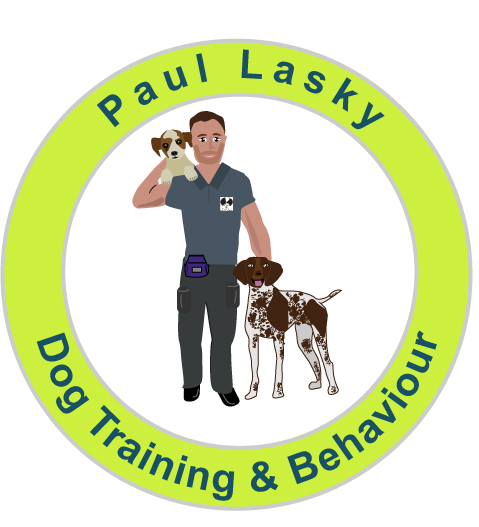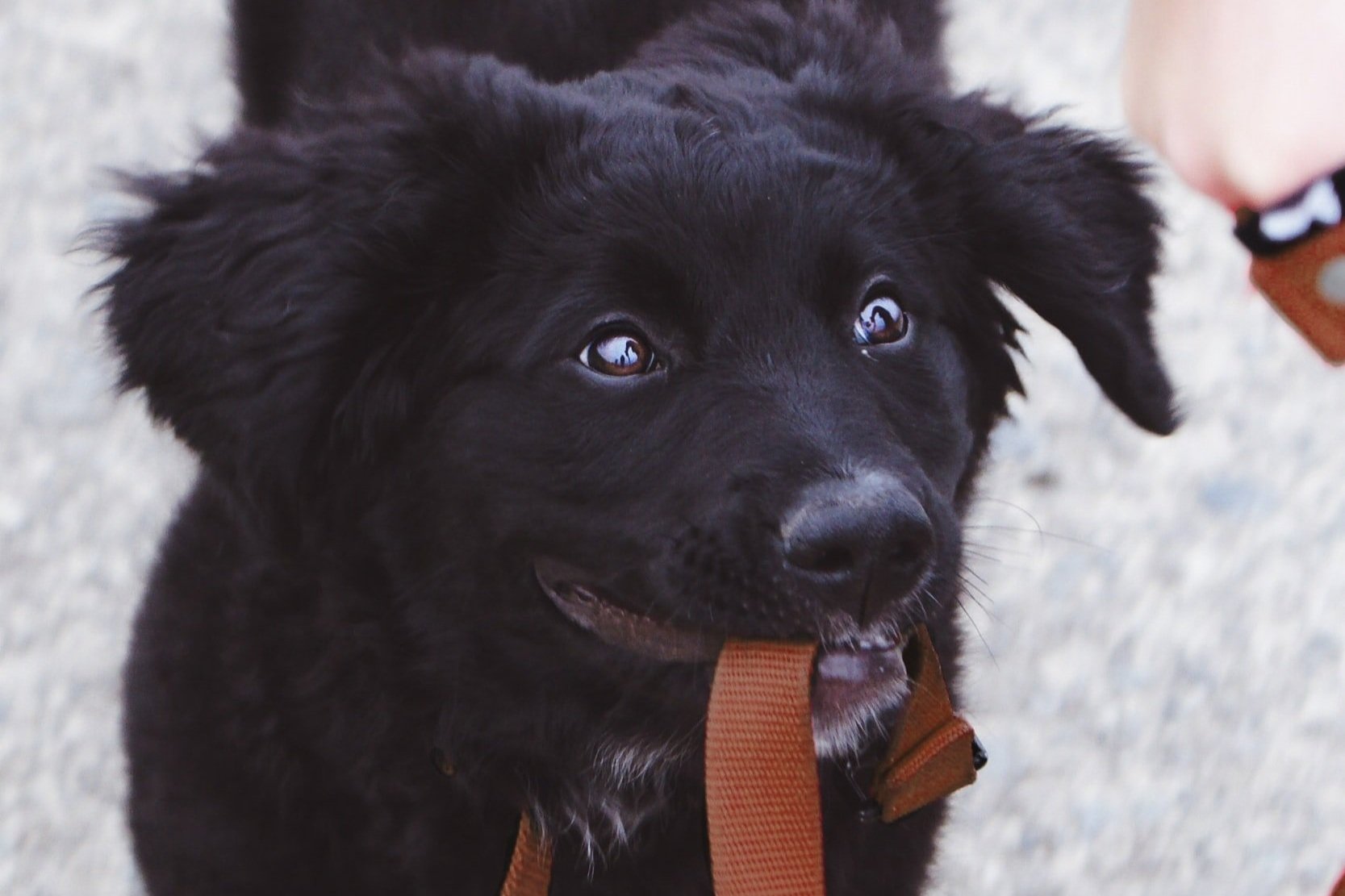How to walk your puppy
As discussed in my trigger stacking blog, dogs can find going out stimulating and at times scary, sometimes to the detriment of their mental state. Being aware of this, is even more important with puppies. The reason for this, is that puppies are learning their beliefs about the world and negative experiences can create coping mechanisms that can last a lifetime.
For example, chasing traffic, barking at other dogs and not wanting to go for a walk at all. As my dog training career has progressed this subject has become very close to my heart. Here are some top tips for more enjoyable walks for both you and your puppy.
Less is more!
When your puppy is fully vaccinated there is a temptation to go for a nice long walk to tire them out. Quantity of walk does not mean quality of walk. Your puppy has very little experience of the outside world. Build the walks up slowly over a period of months. An appropriate level for a first walk may well be exploring the front garden for a few minutes. Compliment your short walks with enrichment at home. I cannot stress this enough, exposing your puppy to as many things as possible, in as shorter space of time as possible does more harm than good, in most cases. It is not worth the risk and could cause issues that last a lifetime.
Be your puppies safe place.
If your puppy is worried about something, do not pull them towards it. Instead offer gentle verbal reassurance and let the puppy approach and retreat at will on a loose lead. If the puppy is particularly worried i.e. startled and wanting to leave the area then go with them. Again, do not pull them towards the thing, telling them it is not scary. This includes other dogs. It is not admitting defeat, it is the right thing to do. Your puppy has many more days ahead to try again and needing to feel safe with you is the number 1 priority.
If your puppy does not want to go for a walk do not pull them along, this will cause long term issues. Do not routinely pick your puppy up. You will get more information from them if their feet are on the ground and they can vote with their feet. They have their choices removed if they are picked up. Imagine if someone picked you up and walked you over to a pile of live spiders and you had no way to get away. Of course, if it is a matter of safety you can pick them up.
Ditch the A to B route march mind set. All dogs go out to explore.
This means sniffing, looking and thirdly exercise. If safe let your puppy sniff. They are taking in valuable information about the environment, that is to be their stomping ground for many years to come. Going for a walk is their time, if they want to sniff something, let them. Pulling them away from a good sniff could be denying them valuable information about the safety of the environment. This could feed into phobias and frustrated reactivity.
It is much better to have done a 20 minute walk, that only ended up at the end of your road and back home with lots of sniffing, than a 1 mile power march where the puppy was denied choices. Not to mention a puppy’s bones are still growing and long walks can cause arthritis and hip-dysplasia.
Do not get obsessed with obedience. Walking a dog should be a 50/50 experience between dog and owner.
This means early on do not get too focussed on the dog walking along side you. A short lead wrapped round your hand will limit the dog’s choices, the dog will feel less safe and more frustrated which can lead to phobias and aggression. It removes the dogs flight option when scared, which means only the fight option is left. This is often how reactive behaviours starts. You can even let the puppy lead on some walks and explore where they want to go.
Reward good behaviours. Take some treats out with you.
If you do catch your dog walking along side you then reward with praise and a treat. If your dog looks at you, reward with praise and a treat. Building a fun treat and praise based training history early will make you more interesting to your dog and will feed into recall and loose lead walking later on. You can even use a “look at me” as a leave it. If your dog is looking at you it can’t be eating the KFC bones on the floor. If the puppy randomly sits on walks, do not get the treats out. This will create a dog that stops all the time for treats.
Simply wait for the puppy to be ready to walk on and gently offer the puppy the chance to walk again by saying “with me” and begin to walk. Try and assess why the puppy has stopped, it is probably worried about something. Try changing direction and see if the puppy is happy to go a different way.
If something scary happens convince your dog it was a good thing.
Gently say “surprises” and drop some treats. The dog will associate the endorphins from the food with the startle. Distance from the scary thing is good. The puppy can appraise from a distance and decide the thing is safe. The treats will help further. No need to take the puppy right up to the scary thing and especially if it is not the puppy’s choice to do so. This should, at a bare minimum be done with lorries, buses, and motor bikes but any novel thing that slightly startles the puppy should be done too.
Do the lamp post!
If your puppy does pull towards something that it isn’t appropriate to get to, for example, someone’s front garden, do not necessarily pull them away. Instead make yourself still like a lamp post and let the lead go tight but don’t let them pull you. Do not pull back, be totally neutral. Let the puppy appraise the front garden from where they are. They can still take in all sorts of information from sniffing the air and looking. Then when the puppy is ready, they will look back at you and you can say “ok lets go” and give the dog a treat.
Imagine going to Alton Towers and being told you can’t even look at anything. This is the 50/50 contract. It is saying sorry pal you can’t go there but we can look at it from here. This will reduce frustration in both dog and handler and the dog will feel safe with you. Do not use this for other dogs unless you are a long distance away. See my dog to dog interactions blog for more on this.
Teach your dog how NOT to say hello
Yes, that’s right, we often get so hung up on having a friendly dog that we forget to teach them how not to say hello. This is particularly important for large breed where not all people and dogs will want to say hello back. Simply say ok “lets go” change direction and give your dog a treat for following. If a dog doesn’t know how to walk past someone or something you can end up with reactivity that looks like aggression. It isn’t ok to say “oh but he only wants to say hello” when it is a 40kg+ dog.
Do on-lead street walks and don’t always go to the park.
If you only go to the park, this can result in a dog that will see the street as a means to an end and will pull like a steam train just to get to the park. Over time this can build into an anxiety behaviour. Instead use all the skills in this article to make street walks a wonderful thing. I am a dog trainer and I have to say I absolutely love street walks and I love to see dogs enjoying them. Further to this, do not always go to the park and throw a ball. This is a high adrenaline activity that needs to be complimented with some relaxing walks so the dog can associate relaxing with being outdoors.
Practice lead skills at home.
Walk round at home on-lead dropping treats as you go. This will build up a positive association to the lead without the stimulation and distraction of being outdoors. Use a good comfortable harness that doesn’t cut into the skin and doesn’t tighten when they pull. Perfect fit and Xtra Dog are good brands. Take time to put the harness on with treats and patience. Do not grab the dog and whack the harness on as quickly as possible, this will make the dog suspicious of walks before you have even started.
Practice your “lets go” at home.
Simply say “ok lets go” drop your shoulder, change direction and throw a treat ahead of you in the new direction and make a big fuss when the puppy follows. This is a fun game and a complete life saver when you need to get out of somewhere fast.
This article doesn’t just apply to puppies, adult dogs’ benefit from this style of handling too.
Enjoy!
If you are ready for this exciting and rewarding journey with me, please go to my services pages. Either for 1-1 puppy training or 1-1 dog training, I look forward to helping you. Send questions via text or WhatsApp and I will always respond within a day or two maximum.



